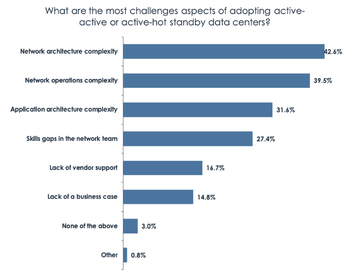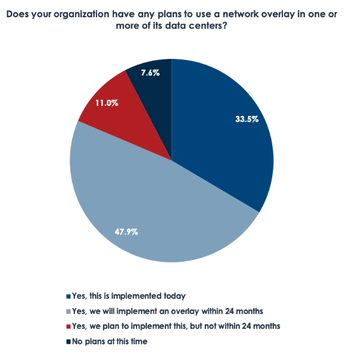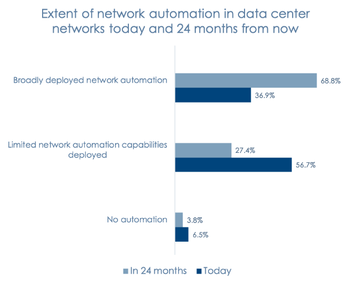In conjunction with Enterprise Management Associates (EMA), Pluribus recently released its State of the Data Center Networking 2021 Annual Report. The research, conducted in early Q2 2021, reaffirms a number of existing trends regarding cloud strategies and investments, while pushing back on conventional wisdom that would presume a rapid decline for the private cloud in light of public cloud expansion.
The message is clear: enterprises are investing in private clouds and they are rapidly evolving their data center networks to achieve their cloud transformation goals.
Private cloud remains the center of gravity for enterprise hybrid multi-cloud strategies
This research should put to rest the outdated idea that “everything” is moving to the public cloud. Don’t listen to the hyperscale hype, look at the data:
- Around 75 percent of enterprise workloads will continue to live in the private cloud
Top motivations cited by enterprises for keeping applications in private cloud environments are security, performance, compliance and cost. In other words, there are plenty of reasons not to put all your application eggs in the public cloud basket.
Not only are most applications staying in private clouds, enterprises are expanding and modernizing their data centers to enable private clouds:
- 56 percent of enterprises plan to increase the number of private cloud DC sites, while only 12 percent are reducing sites (see figure 1)
The conventional wisdom that private data centers are rapidly consolidating is not only wrong for most enterprises, the trend is in the opposite direction.
Why expand private clouds to more sites? The top reason cited by enterprises was simply cloud transformation, which includes data center modernization and adoption of hybrid multi-cloud architectures. Also very important were improved application performance and availability – and that helps to explain the next finding.
Private clouds are moving to high availability architectures
High availability drives distributed data center architectures, including active-active or active-hot standby applications across two or more data centers. Enterprises are also embracing the cloud concept of availability zones. In the event of a failure in one data center location, these approaches can enable applications to keep running in another location (or locations), with little or no downtime experienced by the users.
The research confirms that this is a high priority for enterprise investment:
- Broad deployment of active-active and active-hot standby architectures will nearly double over the next two years from 44 percent to 81 percent.
However, there is a catch: many data center networks are not ready. In fact, as Figure 2 shows, network complexity is the biggest obstacle to the adoption of these architectures.
Clearly enterprises need to invest in their data center networks to reduce complexity and meet these challenges and that helps explain our next findings.
Network virtualization and automation will grow substantially over the next two years
Network virtualization and automation are two key tools to address private cloud networking challenges. Virtualized network overlays enable the network operations team to move at the speed of cloud by delivering reliable and high-performance Layer 2 and Layer 3 network services in minutes and stretching overlays across data centers enables the types of high availability, multi-site architectures that private clouds need.
The enterprises in this survey clearly understand this and are poised to rapidly increase their use of overlays:
- Broad deployment of virtualized network overlays, including stretching overlays across multiple data centers, will grow from only a third of enterprises today to over 80 percent in two years.
A similar trend is seen in use of network automation. While automation approaches can vary widely the enterprises in the report understand that they must embrace some type of network automation if they are going to handle the complexity of multi-site data center cloud networking and move at cloud speed:
- Broad use of network automation will grow from 37 percent to 69 percent.
Implications: How to Build Data Center Networks for Private Clouds
It’s clear that enterprises are investing in private cloud infrastructure and embracing technologies such as overlay network virtualization and network automation. There is broad consensus on how to build data center networks underlays, using layer 3 non-blocking leaf-spine architectures, and general agreement on the value of overlay virtualization and network automation. This research clearly supports those conclusions. But enterprises still must decide on the best approach to implementing overlays and network automation, while tackling the challenge of network complexity, in order to realize their private cloud goals.





